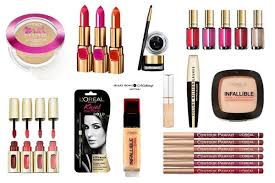
India skin care products market size is projected to reach $5,033.7
The India skin care products market size is projected to reach $5,033.7 million by 2027, according to Allied Market Research report on skincare, registering a CAGR of 9.5 per cent from 2021 to 2027. The segment has witnessed substantial growth in the last few years. This is majorly attributable to the presence of young demography, upsurge in disposable income, and shift of Indian consumers toward healthier lifestyle.
According to the report, the market is studied on the basis of product type, demographics, age group and sales channel. Depending on product type, the market is classified into cream, lotion, and others. By demographic, it is bifurcated into male and female. As per age group, it is segregated into generation X, millennial, and generation Z. According to the distribution channel, it is fragmented into supermarket/hypermarket, specialty stores, department stores, beauty salons, pharmacies and drug stores and online sales channels.
On the basis of product type, the cream segment accounted for the maximum share in the India market in 2017. This is attributable to rise in fashion consciousness among Indian consumers in recent years. Moreover, the rise in the trend of using skin care products such as acne treatments, face masks, facial cleansers, and facial moisturisers among Indian consumers, who are keen to maintain a healthy and youthful appearance, drives the growth of the skin care products in India.
While considering demographics, the female segment was dominant, which accounted for more than half of the share in the market in 2017, and is expected to continue this trend throughout the India skin care products market forecast period. This is attributed to the rise in beauty-conscious females in India who have been taking extra efforts in enhancing their appearance and maintaining their well-being. Thus, increase in expenditure on cosmetics augments the growth of the overall market. However, the male segment in India is expected to witness a significant CAGR, owing to rise in interest of men in maintaining their physical appearance. Moreover, expansion of men’s salons in India is anticipated to boost the India skin care products market growth.
On the basis of age group, the millennial segment is expected to garner the highest revenue in 2027, due to increase in preference of millennial toward natural or organic skin care products. This is attributed to rise in awareness about their benefits over synthetic skin care products. Moreover, India has high millennial consumers who are more concerned toward hygiene and skin care products. This, in turn, is anticipated to create potential opportunities for stakeholders operating in the India skin care products market.
Considering the sales channel, the supermarket/hypermarket led the India skin care products market share in 2017. This is attributed to the fact that Indian consumers have advantages of scanning beauty and personal care products of different types and brands. In addition, the presence of store associates for helping the customers to choose the right product and provide product knowledge boosts the growth of the segment. However, the beauty salons segment in India is expected to exhibit a significant CAGR, due to the rise in interest of men in personal grooming. This, in turn, is boosting the adoption of anti-ageing products and other specialized men’s skin care products.
The players in the market have adopted new product launches as their key developmental strategies to expand their market share, increase profitability, and remain competitive in the market. The key players profiled in India skin care products industry includes Procter & Gamble, Patanjali Ayurved Limited, The Estée Lauder Companies Inc, Emami Limited, Johnson & Johnson Services, Inc, the Himalaya Drug Company, Kao Corporation, Unilever Plc, L’oréal SA, and Beiersdorf AG.

